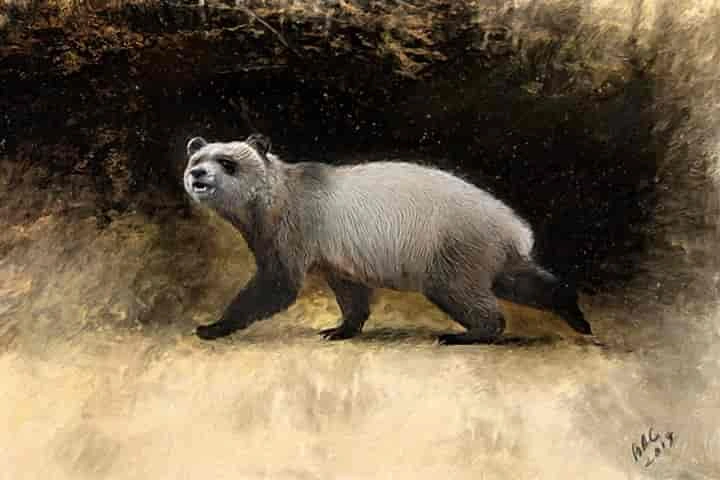The giant pandas who today are the symbol for all that the World Wildlife Fund stands for, were once upon a time not just a native of China but Europe too. As per a report in sciencealert.com, based on the study of a pair of fossilised panda teeth, points to the possibility of these cuddleable bears occupying Europe and unlike their present-day relatives eating plants that were soft.
The remnants found in north western Bulgaria do not belong to today’s giant pandas’ forebears but are closely connected with a species that roamed Europe’s eastern region 6 million years ago. These creatures as per the scientists were either smaller or about the same size as the giant pandas of today.
Based on the fossil, this type of pandas has been named Agriarctos nikolovi after the Bulgarian palaeontologist Ivan Nikolov, who first catalogued the teeth in the 1970s.
The substance that was found around the fossil shows that the habitat of these creatures was a swampy forest which provided them with enough plants. Yet, a look at the cusps of their teeth shows that they were not powerful enough to munch bamboo stems. Thus, they ate something which was soft.
However, these teeth could munch at nourishment which was harder than what their predecessors ate. This is compatible with the idea that giant pandas of today evolved millions of years ago from carnivorous bears by adjusting to an ecological change.
Speaking about this, Nikolai Spassov, remarked: "The likely competition with other species, especially carnivores and presumably other bears, explains the closer food specialization of giant pandas to vegetable food in humid forest conditions.”
Spassov is a palaeontologist from Bulgaria's National Museum of Natural History.
Interestingly, giant pandas have hardly changed over the years but that doesn’t make their family tree linear. So divergent are their family branches that putting them together is challenging.
Maybe they came about in Europe from meat eating bears who moved east or they may have evolved in Asia with one of their branches going to Europe and later becoming extinct.
Animals connected with giant pandas possibly resided in China 8 million years ago yet fossilised teeth of animals close to them were found in Hungary which were dated back to a further 2 million years. As no fresh evidence suggests otherwise, it can be assumed that pandas originated in Europe from where they moved eastward.
Commenting on this aspect, Spassov said: "Giant pandas are a very specialized group of bears. Even if A. nikolovi was not as specialized in habitats and food as the modern giant panda, fossil pandas were specialized enough and their evolution was related to humid, wooded habitats. It is likely that climate change at the end of the Miocene in southern Europe, leading to aridification, had an adverse effect on the existence of the last European panda."
Details of this research were published in the Journal of Vertebrate Palaeontology.




















